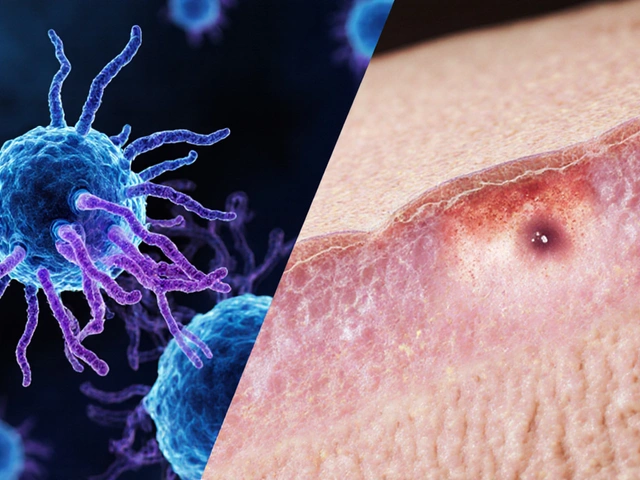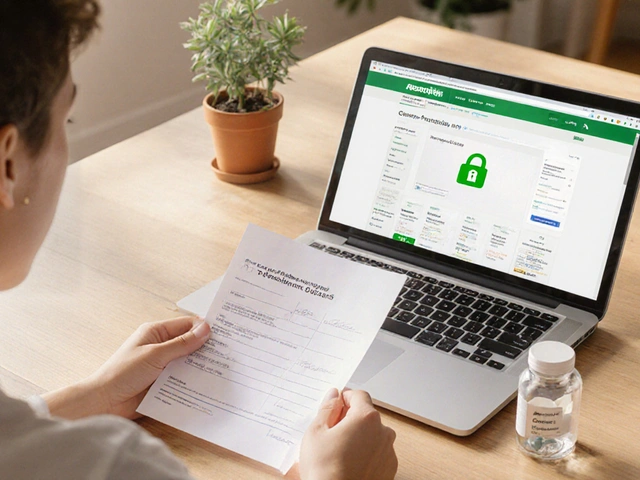Statin Alternatives: Options When Statins Aren't for You
If statins upset your stomach or cause muscle pain, you're not alone. Some people need different tools to lower cholesterol or reduce heart risk. Here's a practical guide to safe, realistic alternatives you can discuss with your doctor.
First, lifestyle changes work and should be the foundation. Drop 5–10% of body weight if you're overweight, aim for 150 minutes of moderate exercise weekly, and swap refined carbs for whole grains. Eat more soluble fiber—oats, beans, apples—and add plant sterols from fortified foods. These steps can lower LDL by a meaningful amount and improve overall heart health.
Prescription options
If lifestyle changes aren't enough, several medications can replace or add to statins. Ezetimibe blocks cholesterol absorption in the gut and often lowers LDL by 15–25% when used alone. Bempedoic acid is a newer oral drug that lowers LDL and may be useful for those who can't tolerate statins. PCSK9 inhibitors (evolocumab, alirocumab) are injectables that can cut LDL by 50% or more—great for people with very high levels or genetic conditions. Fibrates mainly lower triglycerides and can help if your main problem is high triglycerides, not LDL. Niacin raises HDL but has side effects and is less favored now; discuss risks closely with your clinician.
Natural and supplement choices
Some supplements show promise but vary in quality and effect. Red yeast rice contains a natural statin-like compound and can lower LDL, but doses and purity differ between products. Omega-3 fatty acids, especially high-purity EPA, lower triglycerides and may reduce cardiac events in some patients. Berberine can improve cholesterol and blood sugar in small studies, but long-term safety data are limited. Plant sterols and soluble fiber supplements are low-risk and helpful as part of a diet plan. Always check supplements with your doctor—some interact with medications and can cause side effects.
Choosing an alternative depends on your cholesterol numbers, overall risk, side effects, and cost. PCSK9 inhibitors are powerful but expensive; ezetimibe is affordable and well tolerated. Red yeast rice may help milder cases but needs cautious use. Combine approaches: diet, exercise, and a targeted drug or supplement often work better than any single strategy.
When to see a doctor: if your LDL remains high after 3 months of lifestyle changes, if you have a family history of early heart disease, or if you have diabetes or previous heart events. Your doctor can run the right tests, estimate your cardiovascular risk, and tailor a plan—sometimes including a trial off statins to confirm intolerance, or switching to a different statin dose or schedule.
Don't guess with heart health. Talk with your clinician about benefits, risks, and costs. With the right mix of lifestyle and medications, you can manage cholesterol without unnecessary side effects.
Also ask about monitoring: simple blood tests check liver enzymes and muscle markers when starting or changing therapy. Ask your insurer about coverage—some newer drugs need prior approval. Small steps now can prevent big problems later. Keep notes of symptoms and doses.

Simvastatin Alternatives: 5 Options When You Need a Change
Need to lower cholesterol but Simvastatin isn't cutting it, or causing side effects? This guide checks out five alternatives, explaining how they work, who they’re for, and what to watch out for. From cutting-edge injectables to old-school pills, you’ll get the facts, the pros, and the drawbacks. Find out which options might be worth talking to your doctor about. It’s all laid out—no confusing jargon, no scare tactics.
MedicationsLatest Posts
Tags
- online pharmacy
- medication
- dietary supplement
- side effects
- online pharmacy UK
- medication safety
- mental health
- impact
- online pharmacies
- dosage
- generic drugs
- antibiotic side effects
- skin health
- health
- pain relief
- dietary supplements
- massage therapy
- medication side effects
- eye inflammation
- health benefits




